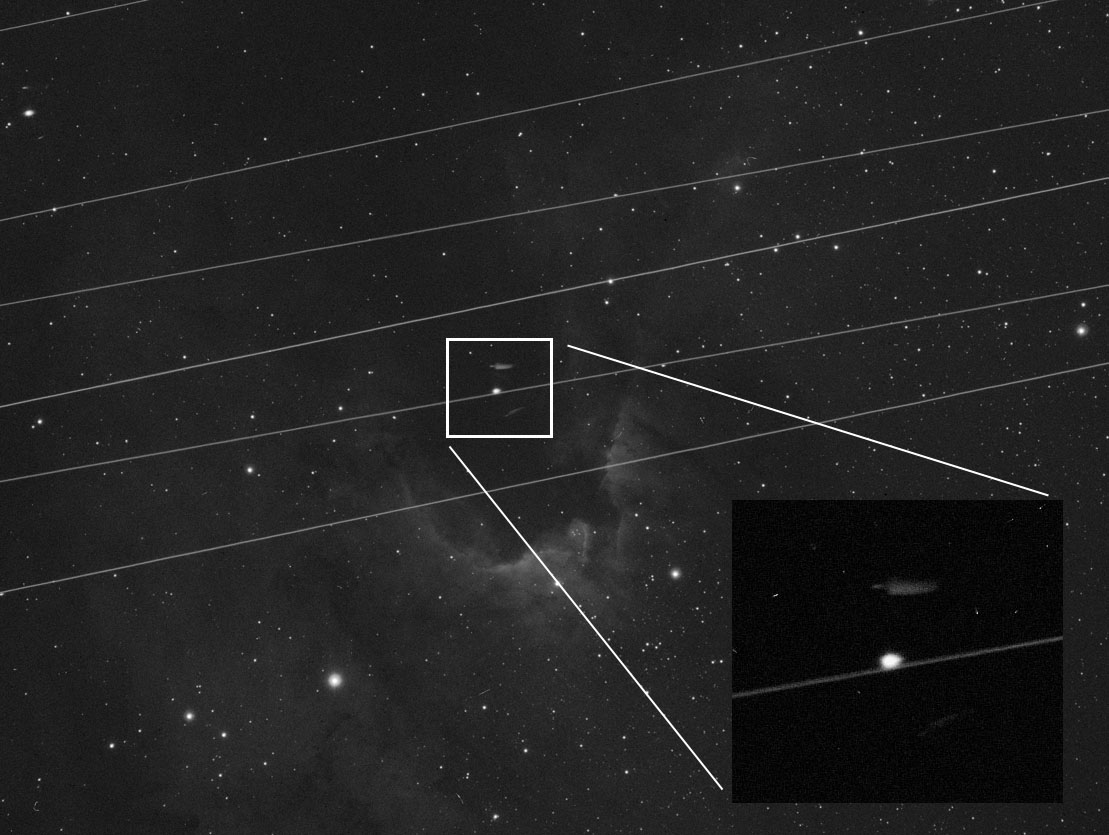A friend recently asked if I’ve ever seen a “UFO” while watching the night sky, and I thought that would be an interesting topic for this blog. I think that anyone who spends much time looking at the night sky is eventually going to see something strange, and I’ve seen many things that I couldn’t explain. However, I’ve never seen anything that seemed “alien”. That is, I’ve never seen anything that was truly bizarre – just things that are hard to know exactly what caused them.
First, I have to make a distinction between seeing things (with your eyes) and seeing things in captured images. I don’t spend a lot of time actually looking at the sky, but my cameras are very dedicated observers, rarely taking their “eye” off the target. When we look at the night sky, almost everything seems static – not moving, so we most often notice something because it moves. That is, it changes position relative to the stars. This might be a satellite, an asteroid, a comet, an airplane, or something else. Such things come in a wide range of brightness and move at widely varying speeds. When such an object is captured in an image, much of the information about speed is lost – it just appears as a line or streak across all or part of the image. In general, we can’t tell whether the line represents a slow movement over the entire duration of the image capture, or just a portion of it. But we can look at other characteristics for clues.
For example, airplanes usually leave two or more parallel lines when imaged through a telescope. This is because they have multiple lights on different parts of the aircraft body. In the picture below we see multiple sets of lines, some of which are not quite parallel. Airplanes often travel along a common path, so it is not unusual to capture more than one plane, especially when making a very long exposure, and they would typically be very similar in direction, but not perfectly parallel.
We also see that at various points along the streaks there are bright spots that don’t quite look like stars. Indeed, if we were to check a star chart for this region of the sky we would not find any bright stars at these locations. What actually happened is that in addition to the “constant” lights on the airplane that made the streaks, there are also strobe lights that fire at regular intervals, thus producing bright spots at more-or-less even spacing.
The inset photo shows the area around one such event, and reveals a pair of mysterious objects on either side of the spot. These are almost certainly parts of the airplane (such as jet engines) that are “frozen” (not streaked) by the brief illumination of the strobe. But without this understanding of airplane lights and how an image accumulates through a long exposure, this image would, indeed, seem very suspicious.
Another interesting experience at a star party actually happened in the middle of the day and was heard rather than seen: I and another astronomer were standing in a field when a very strange sound passed overhead very quickly. It definitely seemed “non-organic”, with a modulated buzz and whine. It also moved much too quickly to be a bird or insect. It wasn’t until hours later that I realized what it must have been; a bullet, fired from miles away and reaching the end of its trajectory. It is not at all uncommon to hear gunfire when you are out in the wilds of Oregon, but aside from this one time, I’ve never heard a bullet zip by. Frankly, I hope not to ever experience that again!
